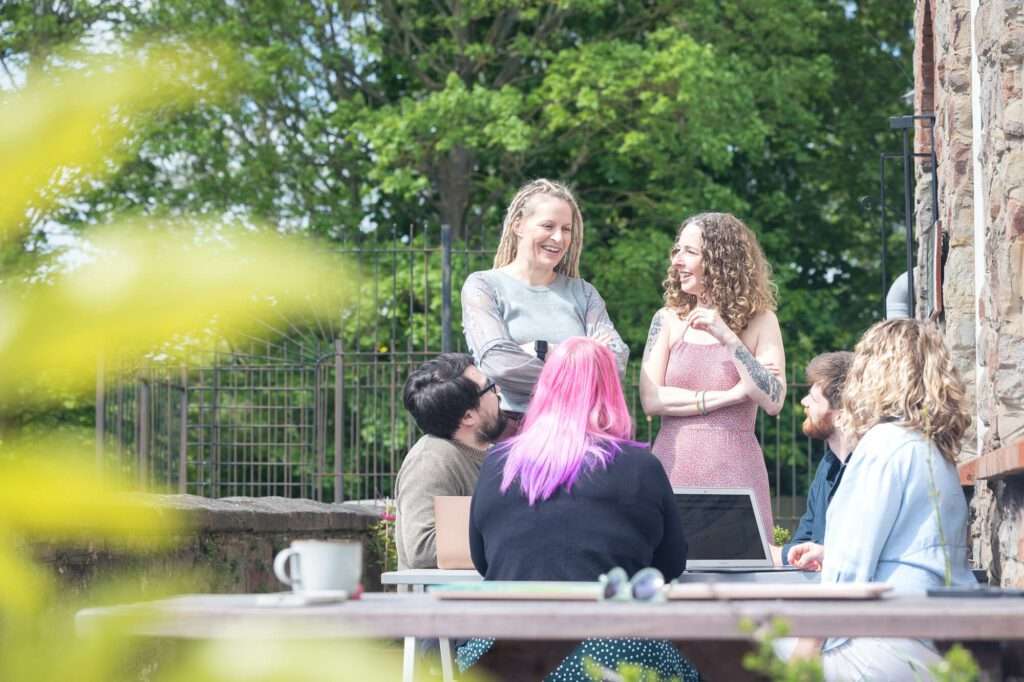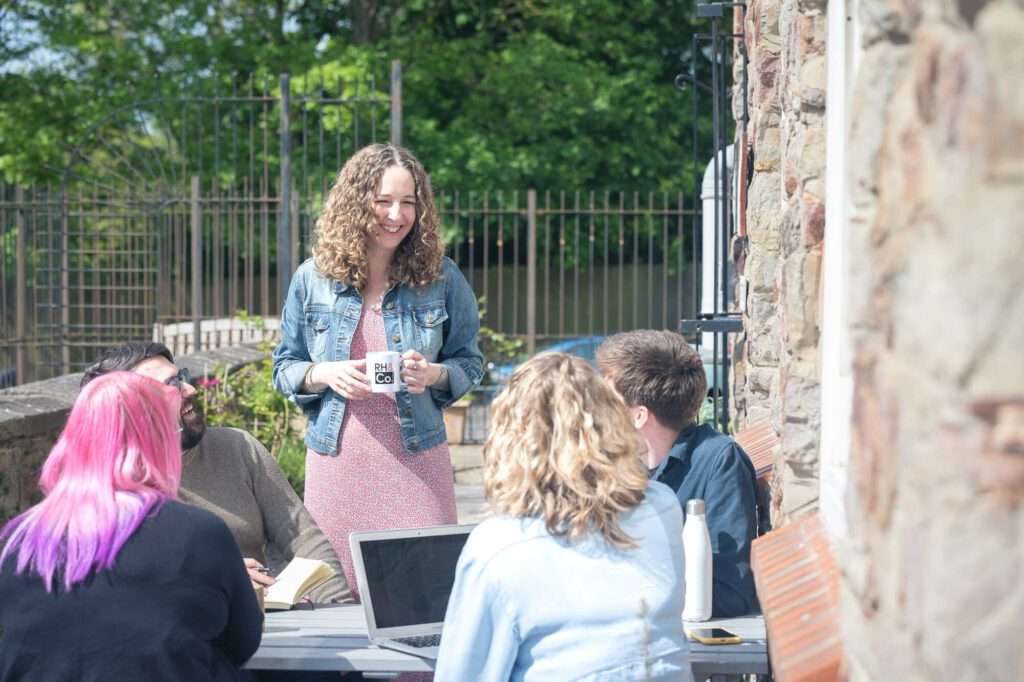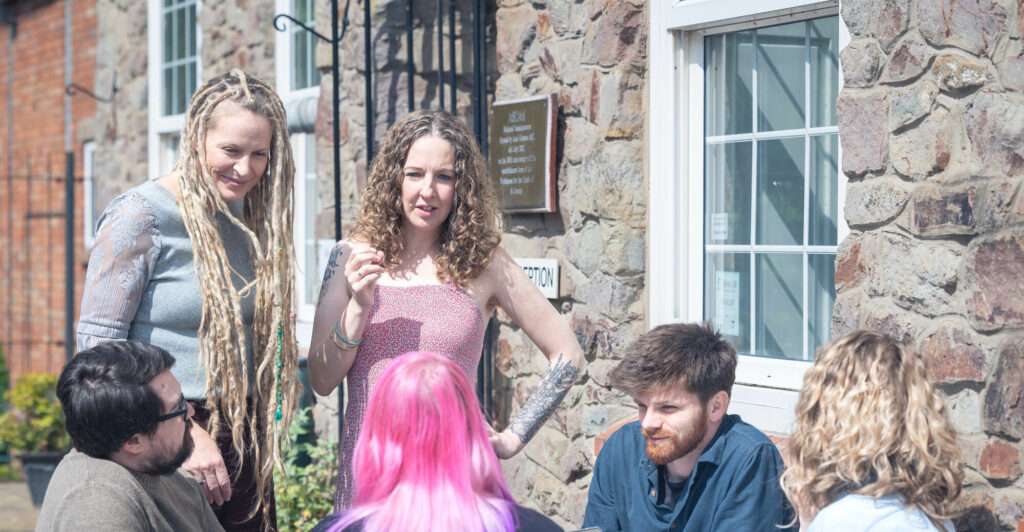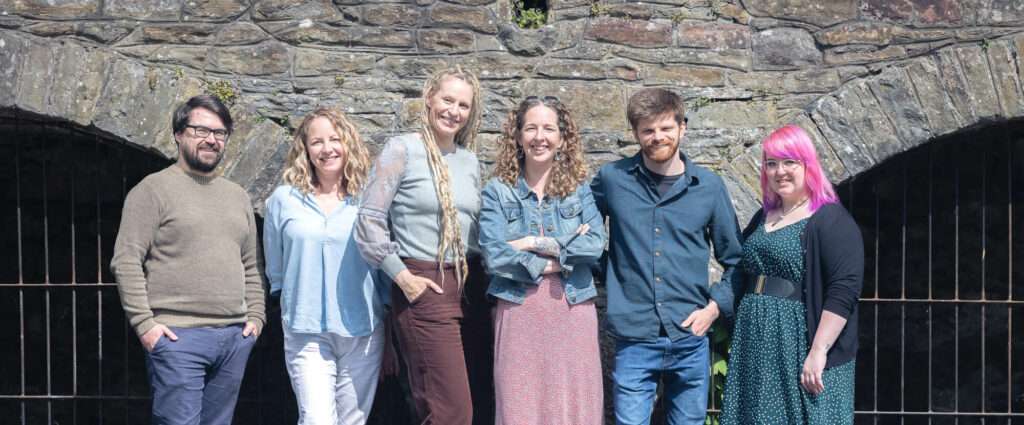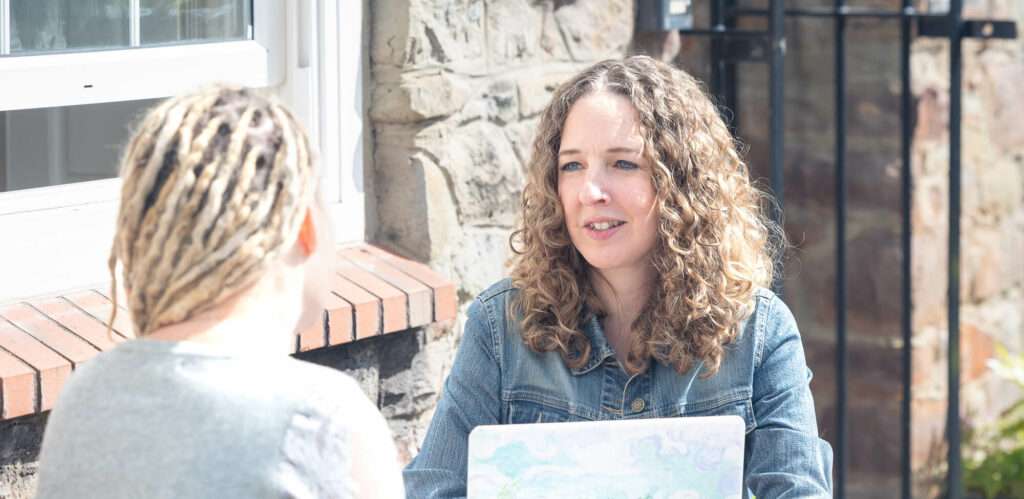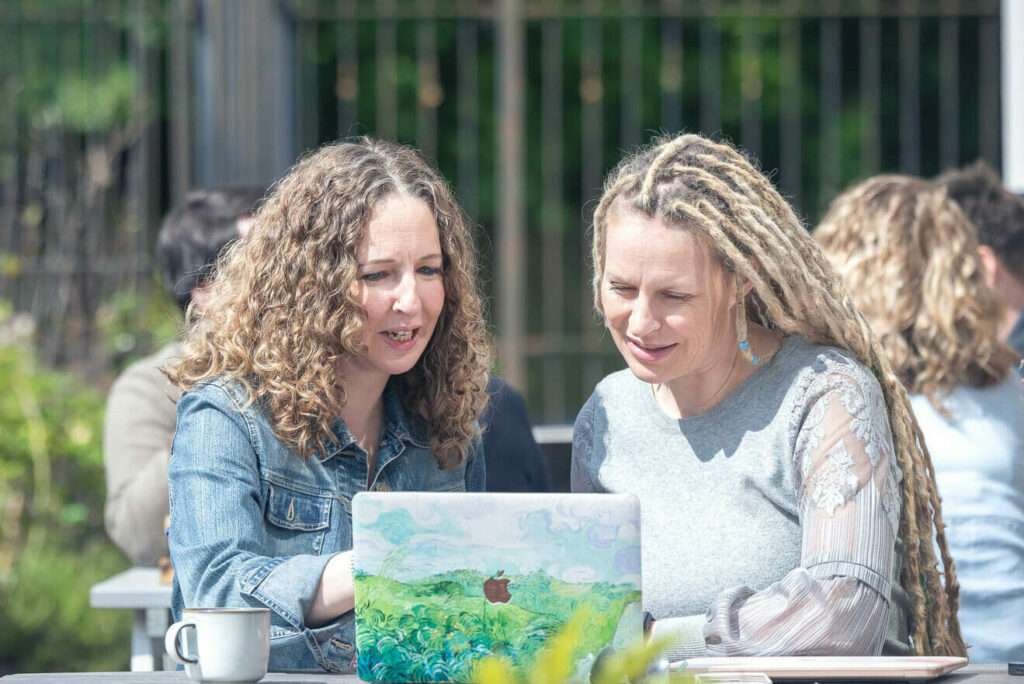

Startup to scaleup – How much should brand evolve?
We’re kicking off our Brand Roundtable series, based on a conversation between experts with rich experience of creating and curating brands from startup to scaleup, and from idea to acquisition. Here they answer a question: in a constantly changing business, how should brand evolve?
Nowhere outside the world of startups and scaleups do businesses change so intensely. Over time, products launch and iterate, teams reshuffle and multiply, and, as research by EPFL university reveals, 73% pivot to a different market.
With such change on a business, product and team level, it’s no surprise that brand, too, must evolve. The catch here is that consistency is a cornerstone of brand narrative. Change too much, too often, and you risk a disconnect with customers, employees and investors. Evolve too little, and you risk the same.
So where do you draw the line? How much should a brand evolve on the startup and scaleup journey? We opened up this question to a virtual table of brand and startup/scaleup experts:
- Faye Lockier, global communication director at Ultraleap
- Abeed Janmohamed, M&A advisor and founder of Volando
- Nick Sturge MBE, portfolio NED and strategic adviser
- Caroline Macdonald, CEO and PR and marketing specialist at OggaDoon
- Tristan Gillen, growth marketing expert and founder of Growth Division
- Lauren (Stewart) Tack, founder and CEO of Invigorate and angel investor
Begin with audience before product
Faye describes brand as “a company’s story: the journey the business has gone through and the place they’re trying to get to.” And with businesses on the startup to scaleup journey, that narrative is constantly on the move.
At the start, however, that journey is determined almost exclusively by the founders. Their history informs their vision, mission, and values. These then form the reason why the business exists, and what it could be for customers, team and the wider world – in other words, the brand. The product itself, if there is one, is secondary.
Problems can emerge when this hierarchy is flipped. Caroline says, “When I’ve worked with pre-startups, startups and early post-startups, there’s often a lot of focus on the engineering or the product – because that’s usually in the founding team’s comfort zone.
“But you have to consider brand from the start, because otherwise you haven’t got the initial awareness. You can have a fabulous idea but unless you present it in a way that’s going to mean something to your target market, you’re not going to progress much further.”
When a business is dependent on a founder, management-wise or brand-wise, it can be a red flag for investors. Even if a company has no plans to replace a founder, it will be seen as a risk.
This is certainly what investors will be interested in, even early angel investors and seed funders. Abeed sheds light on this: “Some products are essentially solutions looking for a problem,” he says. “Everyone talks about product-market fit but I like to flip it the other way – market-product fit is what investors will be looking at.”
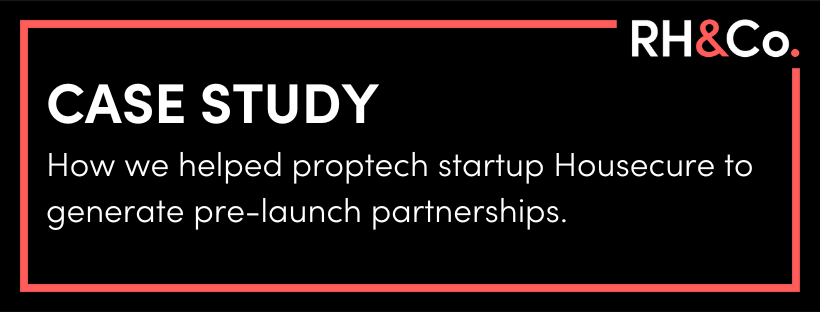
Growing from a minimum viable brand
Although brand is the bedrock of a new startup, this doesn’t mean you should go ‘all in’ on it before you’ve validated your product or service. Instead, Tristan says you just need to have your ‘table stakes’.
In the early stages, he says, you need three things:
- an idea of the problem you’re solving
- an understanding of your audience
- a brand that reflects the values of that audience
This forms a kind of ‘minimum viable brand’ which, like a minimum viable product, you can iterate as you go.
“Startups work by iterating and pivoting,” says Tristan. “Your target audience might change, or your product might, so your brand needs to be a bit reactive – and might have to change fundamentally.“
At RH&Co, this was a challenge we had to address when working with Housecure before the launch of their proptech platform. They needed a brand that could outgrow the product they were currently creating, so they settled for a strapline that spoke to their ambition as well as their launch offering: Stress-free property transactions. Broad enough so they had room to manoeuvre without needing to rebuild their brand capital from scratch if they did so.
Financially, Lauren says to be mindful what you spend on brand at this point – you don’t want to dash to TV for your hero moment if your product is still finding its feet and there’s no guarantee you’ll be able to deliver on key features.
Instead, in the early stages, most of your spend will go towards the thinking behind the brand – the messaging, the audience, the problem-solution fit – and beginning to have a conversation with your audience.
“The hero moment can come later,” says Lauren, “once you can convert that publicity into a promise you can deliver on.”

Scaling and reaching new audiences
Little advice applies forever in startups and scaleups, however. You can start quite scrappy but at some point in your growth journey you’re going to need to move beyond a minimum viable brand. The original vision, mission and values might still apply but they’ve likely matured, along with the audience and the arenas you’re playing in.
“There’s often a tipping point when you hit product-market fit,” says Tristan. “The brand you started with might not be good enough to scale with. Or if you’re hitting new target audiences, you might need to clean up the brand for them.”
At this stage you might need to think more internationally about the brand that potential investors and employees see. Your customer audience also might become split into more nuanced personas, in turn requiring more nuanced communication. This is the time to revisit vision, mission and values, and invest more intentionally in the visual branding, the employer value proposition, the brand narrative and voice, and up-to-the-minute messaging.
Future-proofing your brand for investment and growth
Towards the beginning of a startup’s life, the founders have a, well, foundational role to play in shaping the brand. But as the business builds, team member by team member, financial year by financial year, the role of the founders should evolve like everything else.
Nick experienced this first hand when he was growing Bristol’s innovation hub, Engine Shed. If the founders stay as the crux of the brand for too long, Nick says, it begins to get risky.
“The profile of the founder is an asset,” says Nick. “But a growing venture needs to manage this well. There were times when Engine Shed seemed to be more about me than about the place, and it was fine to use that for a while, but there comes a point where you need to wind that back so that the business isn’t completely dependent on you.”
When a business is dependent on a founder, management-wise or brand-wise, it can be a red flag for investors. Even if a company has no plans to replace a founder, it will be seen as a risk. To future proof your brand, it has to live beyond the people who first dreamt of it.
Future-proofing a startup or scaleup brand is impossible to achieve entirely. Markets can become volatile, audience attitudes change, and competition can disrupt your approach. But at a minimum, your brand should be future-proofed in line with your five-year business plan.
“Whether I’m advising B2C or B2B companies, I tell people to think about where they want to be in five years’ time,” says Abeed. “If it is in more than one country, for instance, the brand needs to translate across cultures. So they need to build the business and the framework for that point, and not just for what they can see right in front of them.”
For more insight into building a startup or scaleup brand, see our thoughts on brand building, lead generation and the 95-5 rule. Or stay tuned for more conversations from our brand roundtable.
Back to hompeage


